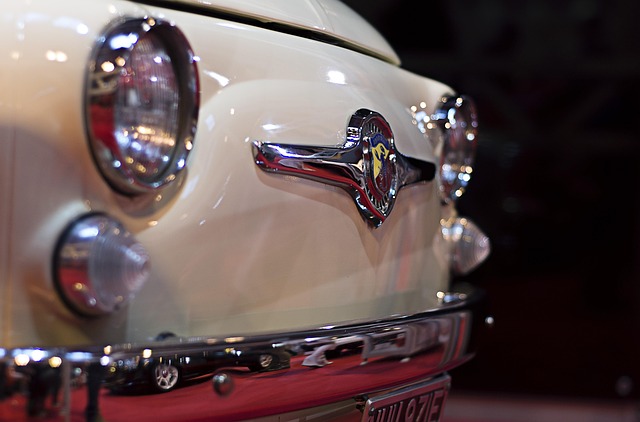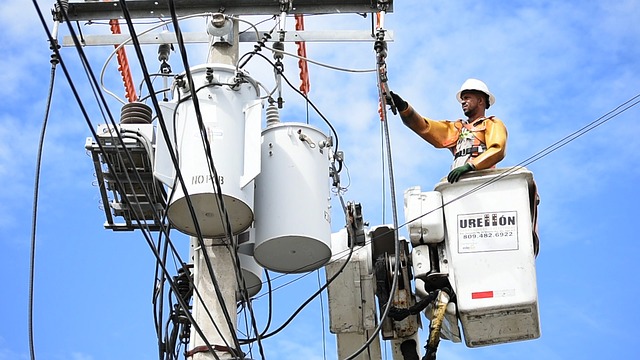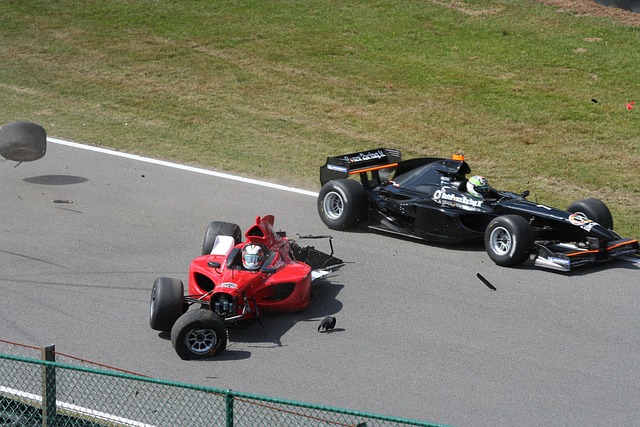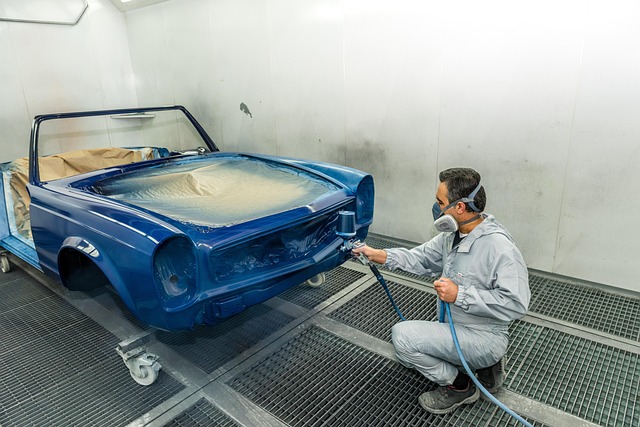Mercedes Spot Weld Bonding: Enhancing Safety Cell Performance with Advanced Techniques
Mercedes spot weld bonding is a cutting-edge technology that uses high-intensity laser beams to crea…….
Welcome to an in-depth exploration of a transformative process that plays a critical role in the automotive industry—Mercedes Spot Weld Bonding. This innovative technique has revolutionized the way vehicle manufacturers assemble and strengthen their creations, ensuring structural integrity and precision. In this comprehensive article, we will unravel the intricacies of Mercedes spot weld bonding, its global impact, technological innovations, and the challenges it aims to address. By the end, readers will grasp the significance of this process in shaping modern automotive manufacturing.
Mercedes spot weld bonding is a specialized metal joining process that has become an integral part of automotive production, particularly for premium vehicles like those from Mercedes-Benz. It involves precisely applying localized heat and pressure to create a strong bond between two metal components. This technique is a evolution from traditional welding methods, offering enhanced control and precision, especially in complex assembly lines.
Metal Substrates: These are the two metal pieces that will be joined together. They can vary in thickness and composition, depending on the specific vehicle part being manufactured.
Welding Gun: A specialized tool equipped with a heat source (typically an electric arc or laser) and pressure applicator. The gun is maneuvered to the joint location for precise welding.
Power Supply: Provides the necessary energy to ignite the heating element in the welding gun, generating the required heat for bonding.
Workholding Equipment: Securely holds the metal substrates in place during the welding process, ensuring stability and alignment.
During the process, the welder focuses on specific spots or points of contact between the metal pieces. By applying concentrated heat and pressure at these spots, the metals melt and interdiffuse, creating a strong bond that rivals traditional welding methods. This localized approach ensures minimal heat input into non-critical areas, preserving the overall integrity of the vehicle components.
The concept of spot welding dates back to the 1950s when the automotive industry sought more efficient and precise assembly methods. Early spot welding techniques were manual and required significant skill to ensure consistent quality. However, technological advancements in the late 20th century revolutionized the process, making it faster, more accurate, and suitable for various applications.
Mercedes-Benz, known for its commitment to innovation, embraced spot welding early on as a way to enhance vehicle construction. Their engineers refined the technique, developing specialized equipment and processes tailored to their high-quality standards. Over time, Mercedes spot weld bonding evolved from a niche process to a standardized practice in the automotive industry, thanks to its ability to deliver consistent quality and reduce manufacturing times.
Mercedes spot weld bonding has left an indelible mark on the global automotive landscape, influencing manufacturing practices across continents. Its adoption has been driven by several key trends:
Global Standardization: The automotive industry is witnessing a push for standardization to facilitate cross-border manufacturing and supply chain management. Mercedes spot weld bonding aligns with this trend, offering a consistent and reliable joining method that can be applied universally.
Lightweighting Vehicles: A growing focus on fuel efficiency and sustainability has led to the widespread adoption of lightweight materials in vehicle construction. Spot welding is particularly effective for assembling these lighter components, ensuring structural integrity without adding excessive weight.
Complex Vehicle Designs: Modern vehicles are characterized by intricate designs and more complex assembly processes. Spot welding allows manufacturers to handle these complexities with precision, enabling the production of increasingly sophisticated vehicle structures.
Europe: Germany, as the birthplace of Mercedes-Benz, has been a pioneer in spot welding technology. European automotive manufacturers widely embrace this method, ensuring high-quality standards across their vehicles.
North America: The region’s emphasis on efficiency and cost-effectiveness has led to the rapid adoption of spot weld bonding. Many North American carmakers now incorporate this technique into their assembly lines.
Asia Pacific: Countries like Japan and South Korea, renowned for their automotive manufacturing prowess, have also embraced spot welding. They adapt the technology to suit local needs, contributing to the global knowledge base.
The economic implications of Mercedes spot weld bonding are far-reaching, impacting various sectors within the automotive industry.
Reduced Manufacturing Costs: By streamlining the assembly process and minimizing material waste, spot welding contributes to lower production costs. This cost savings can be passed on to consumers or reinvested in research and development.
Increased Production Rates: The efficiency gains from spot weld bonding allow manufacturers to produce vehicles faster, meeting growing market demands without significant investment in additional infrastructure.
Supply Chain Optimization: Standardization facilitates the optimization of supply chains, as parts can be manufactured and supplied more efficiently. This reduces lead times and enhances overall productivity.
Automotive companies have recognized the potential of spot welding technology and have invested heavily in its integration into their manufacturing facilities. These investments include purchasing advanced welding equipment, training employees, and developing in-house expertise. Such commitments ensure that manufacturers remain competitive in a rapidly evolving market.
Mercedes spot weld bonding has been a catalyst for technological progress, with continuous innovations aimed at enhancing its capabilities and expanding its applications. Some significant advancements include:
Laser Spot Welding: This technique employs a highly focused laser beam to deliver precise heat input during the welding process. Laser spot welding offers exceptional control, enabling smaller spot sizes and faster processing times. It is particularly useful for joining thin materials without compromising structural integrity.
Automated Welding Systems: The integration of robotics and automation in spot welding has revolutionized assembly lines. Automated systems can perform complex welding patterns with consistent accuracy, reducing labor costs and improving productivity. These systems are programmed to adapt to various part configurations, ensuring versatility.
Advanced Control Systems: Modern control systems allow for precise monitoring and adjustment of welding parameters, such as heat input, pressure, and cooling rates. This level of control enhances the quality of welds, reduces defects, and enables the achievement of stringent design requirements.
The global automotive industry is subject to stringent regulations aimed at ensuring vehicle safety, environmental sustainability, and consistent quality. Mercedes spot weld bonding, as a critical manufacturing process, falls under the scrutiny of these policies and regulatory frameworks.
Safety Standards: Organizations like the Society of Automotive Engineers (SAE) establish safety standards for vehicle construction, including guidelines for metal joining methods. These standards ensure that spot welds meet specific strength and integrity requirements.
Emissions Regulations: Environmental regulations drive the need for lightweight vehicles with improved fuel efficiency. Spot welding aligns with these goals by enabling the use of lighter materials while maintaining structural rigidity.
International Standards: Global initiatives, such as those under ISO (International Organization for Standardization), promote standardization in various industries, including automotive manufacturing. Mercedes spot weld bonding has been incorporated into these standards, facilitating its global adoption and ensuring consistent quality.
Despite its numerous advantages, Mercedes spot weld bonding faces certain challenges that have hindered its widespread acceptance in some segments of the automotive industry. Addressing these issues is crucial for maximizing the technique’s potential.
Initial Setup Costs: The initial investment in specialized equipment and training can be a significant barrier for smaller manufacturers or those transitioning to spot welding from traditional methods. However, long-term gains in efficiency and cost savings often outweigh these upfront costs.
Material Compatibility: Not all metals are suitable for spot welding, and achieving strong bonds across different material combinations can be challenging. Researchers are addressing this issue by developing new welding techniques and materials that enhance compatibility.
Defect Concerns: As with any metal joining process, spot welding is susceptible to defects like cracking or poor penetration. Advanced control systems and quality assurance measures are essential to minimize these issues and ensure consistent high-quality welds.
Strategies for Overcoming Challenges:
Government Incentives: Providing financial incentives or grants to encourage the adoption of advanced manufacturing technologies, including spot welding, can help overcome initial setup costs.
Industry Collaboration: Sharing knowledge and best practices within the industry can facilitate the development of standardized procedures for various material combinations, addressing compatibility challenges.
Continuous Research and Development: Ongoing R&D efforts focused on improving welding techniques, materials, and control systems will enhance the overall reliability and efficiency of spot weld bonding.
The successful implementation of Mercedes spot weld bonding is evident in various case studies across the automotive industry. These examples highlight the technique’s versatility and impact.
Case Study 1: BMW’s i3 Electric Vehicle
BMW utilized spot welding extensively in the production of its iconic i3 electric vehicle. The company adopted laser spot welding for joining lightweight aluminum components, ensuring structural integrity while maintaining the vehicle’s sleek design. This application set a new standard for eco-friendly vehicle construction.
Key Takeaways:
Case Study 2: Toyota’s Hybrid Vehicle Program
Toyota, a pioneer in hybrid vehicle technology, incorporated Mercedes spot weld bonding into its advanced hybrid systems. The technique was employed to assemble intricate structures, ensuring the precision and reliability required for efficient power distribution.
Lessons Learned:
As we peer into the future, several trends and strategic considerations shape the trajectory of Mercedes spot weld bonding.
Advanced Materials Integration: With the rise of new materials like advanced high-strength steels (AHSS) and lightweight composites, spot welding will play a pivotal role in their integration into vehicle structures. Developing welding techniques tailored to these materials will be essential for future vehicle designs.
Autonomous Vehicles and Robotics: The growing trend towards autonomous vehicles and robotic assembly lines aligns with the precision and efficiency offered by spot weld bonding. As these technologies mature, spot welding may become even more prevalent in manufacturing.
Sustainability Focus: Environmental sustainability will continue to drive innovation in the automotive industry. Spot weld bonding is well-positioned to support this goal by enabling the use of lightweight materials, reducing material waste, and minimizing energy consumption during assembly.
Mercedes spot weld bonding has emerged as a cornerstone of modern automotive manufacturing, offering unparalleled precision, efficiency, and structural integrity. Its global impact is evident in the industry’s evolution towards standardized processes, lightweighting, and complex vehicle designs. As technological advancements continue to shape the automotive landscape, Mercedes spot weld bonding will remain a key enabler, driving innovation and sustainability in the years to come.
Q: How does Mercedes spot weld bonding differ from traditional welding methods?
A: Unlike traditional welding, which involves melting and fusing entire areas of metal, spot weld bonding applies heat and pressure to specific points of contact between two metal pieces. This localized approach ensures minimal heat input into non-critical areas, preserving the overall integrity of vehicle components.
Q: What materials are best suited for spot welding?
A: Various metals can be spot welded, including steels, aluminum alloys, and certain types of composites. The choice depends on factors like material composition, thickness, and the specific requirements of the assembly. Advanced high-strength steels (AHSS) and lightweight materials are gaining popularity due to their strength-to-weight ratio.
Q: Can spot weld bonding be used for all vehicle parts?
A: While spot welding is highly versatile, it may not be suitable for every vehicle part. Complex structures or areas requiring extensive fusion might be better served by other welding methods. However, for precise jointing and assembly, spot weld bonding excels in many applications.
Q: How does the adoption of spot weld bonding impact labor requirements in automotive manufacturing?
A: The initial setup may require specialized training, but once implemented, spot weld bonding can automate or streamline certain assembly processes, reducing labor costs. Automated welding systems, for instance, can perform complex tasks with minimal human intervention.
Q: Are there any safety considerations specific to Mercedes spot weld bonding?
A: Like any metal joining process, spot welding must adhere to strict safety standards. Proper personal protective equipment (PPE) and ventilation are essential to protect workers from potential hazards, such as heat exposure and airborne particles. Regular maintenance of equipment also ensures safe operating conditions.

Mercedes spot weld bonding is a cutting-edge technology that uses high-intensity laser beams to crea…….

Mercedes spot weld bonding is a meticulous process integral to luxury automotive manufacturing, comb…….

Mercedes spot weld bonding is a cutting-edge technique that strengthens vehicle bodies by strategica…….

Mercedes spot weld bonding is a critical process for achieving seamless OEM panel integration in veh…….

Mercedes spot weld bonding is a critical process for automotive manufacturing and restoration, ensur…….

Mercedes spot weld bonding is a specialized process that uses heat and pressure to create strong, du…….